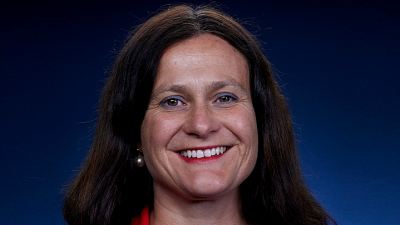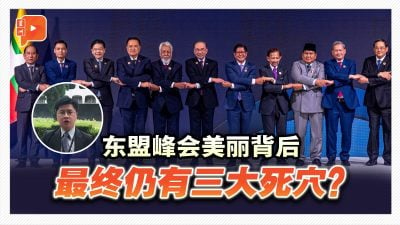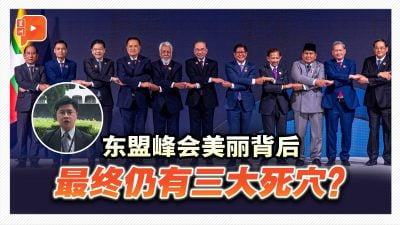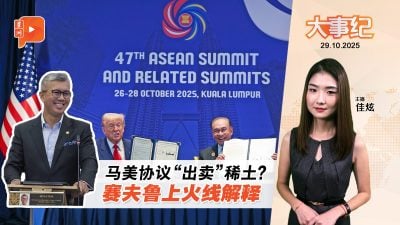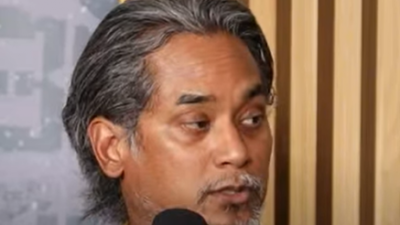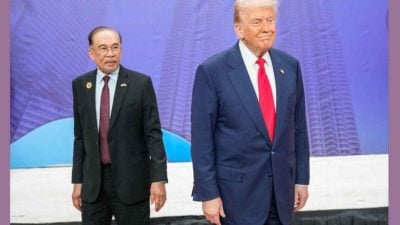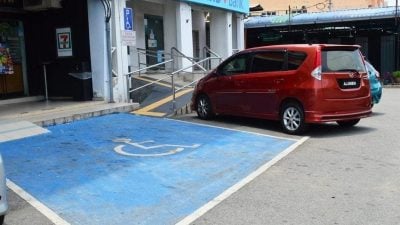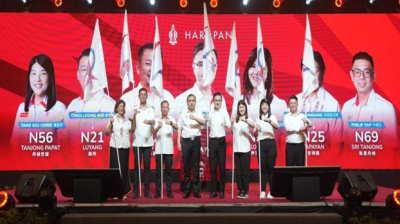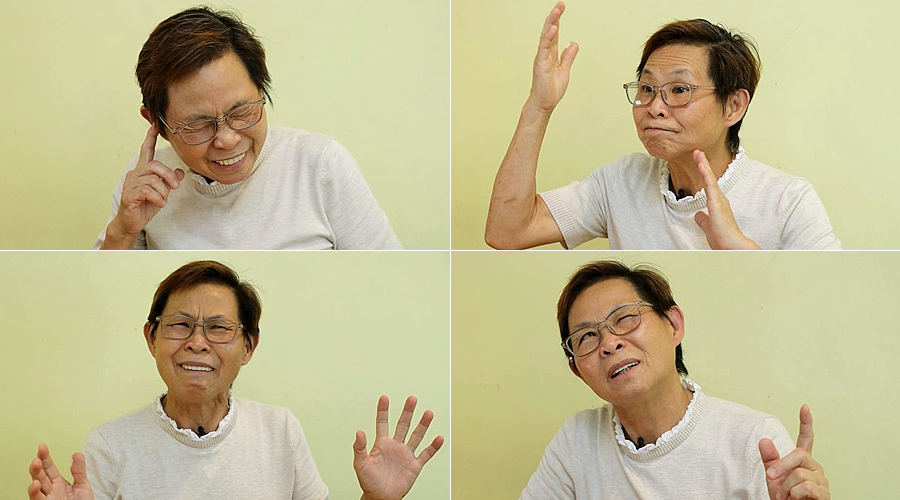
As the countdown to the ASEAN Summit begins and global attention turns to Kuala Lumpur, a new face will take the stage this year.
At the 47th ASEAN Summit, sign language interpreter Tan Lee Bee will stand at one corner of the opening ceremony stage—serving as a vital bridge between the voices of world leaders and the deaf community.
With the initiative of Foreign Minister Datuk Seri Mohamad Hasan, this summit will, for the first time in ASEAN history, feature a professional on-site sign language interpreter, showcasing not only Malaysia’s expertise in sign language interpretation but also ASEAN’s spirit of inclusiveness.
“It’s the ASEAN Summit—of course I’ll be nervous!” said Tan.
At the grand opening ceremony, she will stand at the lower left corner of the stage, facing a hall filled with dignitaries from around the world.
There will be no subtitles, no teleprompter—only a live camera broadcasting her interpretation alongside the speaker’s remarks on the big screen. Her ears must catch every word uttered on stage.
“My biggest fear is not being able to hear clearly—or missing something important. Especially key words—if I miss one, the entire meaning could change,” she said.
Tan will interpret in sign language the speeches by the Prime Minister, ministers, and special guests during the opening and closing ceremonies of ASEAN Summit.
Though she has long served as the Prime Ministers’ interpreter for Malaysia at major national events, she admitted in an interview with Sin Chew Daily that her heart still races every time she steps onto the stage.
To prepare for the ASEAN Summit, Tan spends every spare moment researching online—using AI tools to find terminology, learn about international contexts, and review Prime Minister Datuk Seri Anwar Ibrahim’s past remarks on ASEAN.
Whenever she encounters unfamiliar terms, she carefully considers how to express them accurately in sign language.
This “leave-no-stone-unturned” attitude has become her professional mantra.
After all, the ASEAN Summit gathers top leaders from all over the world—including heads of ASEAN member states, the U.S. President, Indian Prime Minister and numerous foreign ministers and envoys.
She even studies who might be absent and why, ensuring she is fully prepared.
To the audience, Tan always appears calm and composed, reacting swiftly in real time. But only she knows that her poise is the result of countless hours of preparation and practice.
As 2025 marks Malaysia’s ASEAN Year, Tan’s schedule has become even busier, requiring her to stay updated on international news.
With Prime Minister Anwar’s frequent overseas visits and live coverage by RTM, Malaysia’s national broadcaster, she is often the first-choice interpreter.
Tan’s first appearance on the ASEAN stage was at the ASEAN Foreign Ministers’ Meeting in July.
That day, she introduced a performance by deaf children, accurately conveying the applause and appreciation of the audience.
Her professionalism impressed everyone—and soon after the event, she was confirmed as the interpreter for the ASEAN Summit in October.
“I’m really proud to have been chosen among so many interpreters,” she said sincerely.
“It means my hard work has been seen, and appreciated.”
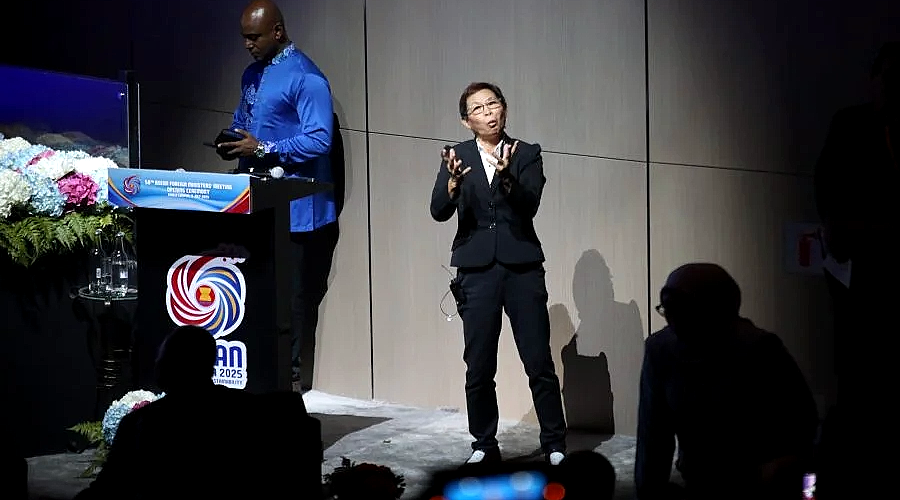
A “hybrid” approach combining Malaysian and American sign language
At the upcoming ASEAN Summit, Tan will use a hybrid sign language approach, blending Malaysian Sign Language (BIM) and American Sign Language (ASL).
She explained that modern sign language originated from the United States, forming the foundation for many national systems.
Over time, countries localized it to reflect their own cultures and daily life, though around 40–50 percent of the vocabulary still overlaps with ASL.
Thus, at international events, she switches flexibly to ensure both in-person audiences and television viewers can understand the speeches.
“For example,” she said, “the sign for ‘eat’ differs by culture—in China, it mimics chopsticks, while in Malaysia, it’s eating with the hand. These gestures reflect local ways of life,” she said.
When it comes to country names, she stressed, accuracy is paramount—each country’s official sign is unique and must be respected.
58% of sign language relies on facial expression
At the July Foreign Ministers’ Meeting, Tan began her day before dawn—leaving home at 5 a.m., taking a short nap in the car upon arrival, and having breakfast before starting.
Four hours before the ceremony, she met with the hosts to review the program and confirm every detail.
Before going on stage, she follows a “calming ritual”: opening and clenching her fists several times to relax her hands.
“About 58 percent of sign language comes from facial expressions,” she noted.
She takes a deep breath to steady herself, then exchanges encouragement with the host:
“You can do it—we can do it!”
In addition to knowledge and focus, she must also guard against stomach trouble.
She recalled one incident when she suddenly suffered severe stomach pain and diarrhea right before a job—probably from eating something bad.
Luckily, her condition eased just before going on stage, but she still remembers the cold sweat and panic vividly.
“I’m older now, and my body isn’t as strong as before. So before important events, I’m extra careful—no iced drinks, no bananas, nothing that speeds up digestion. The safest option is bread and plain water, which I always bring along,” she said.
Because Tan often interprets for Prime Minister Datuk Seri Anwar Ibrahim, she closely follows his public engagements and even reviews recordings of his speeches late at night.
She studies his tone, phrasing, and habits, so that even when words are unclear, she can immediately grasp his intended meaning.
“During live interpretation, you can’t hesitate,” she said.
“If you pause to think about a word’s meaning, the speaker will have moved far ahead,” she said.
Typically, sign interpretation lags just one or two seconds behind speech, meaning interpreters must race against the speaker’s pace.
“I hold myself to very high standards—if I take on a task, I want to do it perfectly. If I get even one word wrong, I’ll dwell on it for days,” she said.
Each interpretation requires full mental concentration. “It’s not my hands that get tired,” she joked, “it’s my brain.”
“Whatever you do, do it well. I always remind other interpreters: never gesture randomly when you don’t understand—don’t fake it,” she said.
Malaysia is hosting the largest gathering of regional and world leaders at the 47th Asean Summit and Related Summits, scheduled from October 26 to 28.
More than 30 heads of state and government, including Asean leaders and key dialogue partners such as the United States, China, Japan, South Korea, India, Australia, New Zealand and Canada, will converge at the Kuala Lumpur Convention Centre here to discuss regional peace, economic resilience and inclusive growth under Malaysia’s 2025 Asean Chairmanship theme of ‘Inclusivity and Sustainability.’
A total of 2,854 media personnel from 290 agencies have registered to cover the historic event, which will also mark the formal admission of Timor-Leste as Asean’s 11th member state, symbolizing Southeast Asia’s continued unity and expansion.
Among the high-profile arrivals expected on October 26 are US President Donald Trump and Chinese Premier Li Qiang.
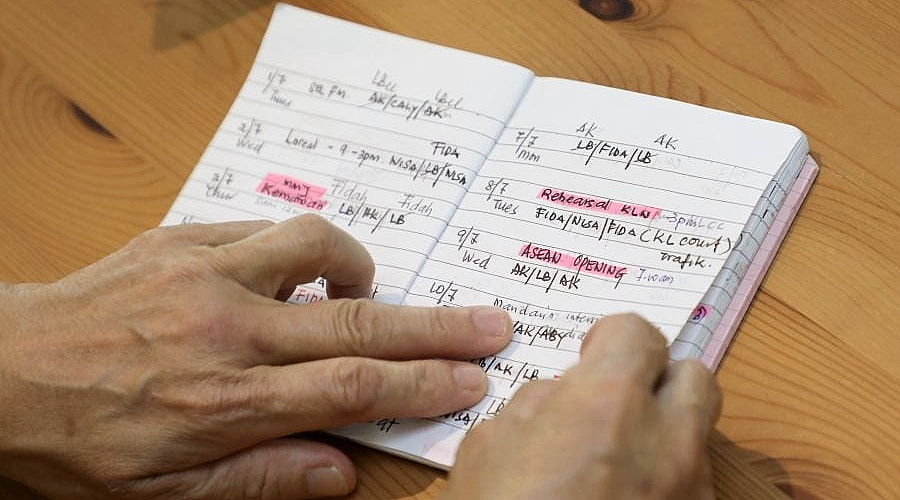
ADVERTISEMENT
ADVERTISEMENT






